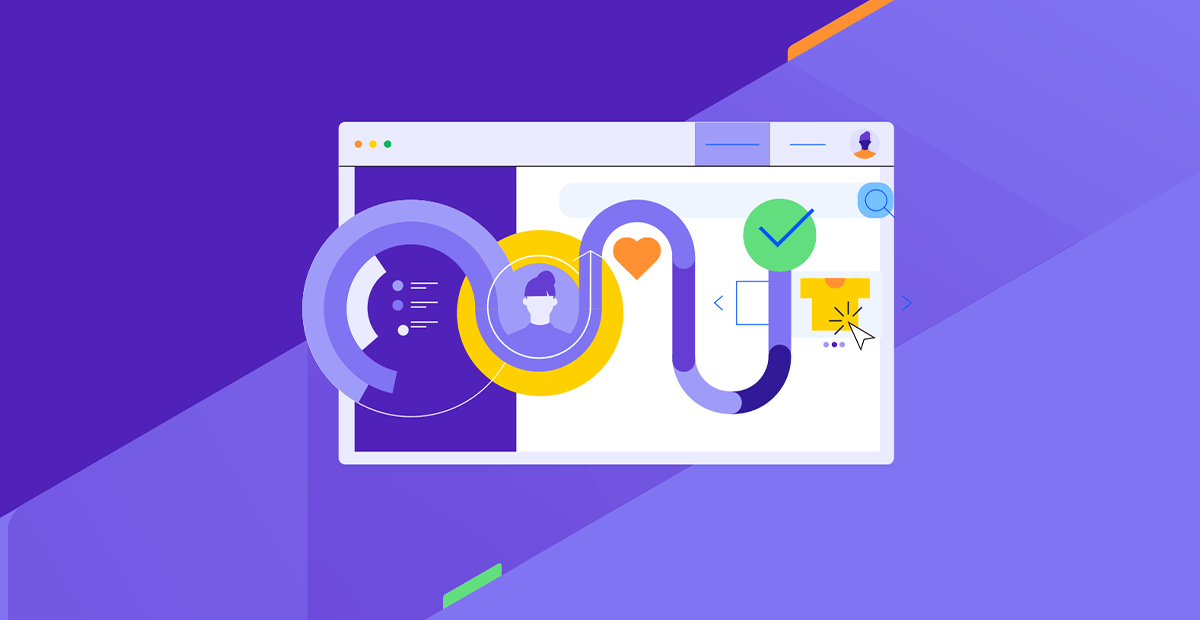Bridging the Design-Development Gap in CMS Projects

To make your digital experience truly shine through your content management system, your designers and developers need to leverage each other. Here’s what that looks like.
The dance between designers and developers is a delicate one, especially when it comes to content management system (CMS) projects. Both bring unique skills and perspectives to the table, but getting them to tango can be a challenge. Designers dream up beautiful, innovative interfaces, while developers focus on making them functional, fast and scalable within the constraints of the CMS. When these visions misalign, projects can quickly derail.
But here’s the thing: In the world of CMS development, successful collaboration between design and development isn’t just about compromise. It’s about finding a way to leverage each other’s strengths to create something greater than the sum of its parts. And the key to making that happen lies in understanding the realities of how design and development actually work in practice.
Prototyping in the Context of a CMS
One of the biggest misconceptions about the design-development process in CMS projects is that it’s a linear one. The idea is that designers create a beautiful, high-fidelity mockup, toss it over the fence to developers, and then move on to the next project. In reality, it’s rarely that simple, especially when dealing with the constraints and capabilities of a CMS.
Enter prototyping and user experience (UX) design. Before diving into pixel-perfect designs, savvy teams start with low-fidelity wireframes and prototypes that take into account the CMS’s capabilities. These rough sketches and clickable models serve as a common language between designers, developers and stakeholders. They allow everyone to agree on the basic structure, flow and functionality of the site before getting lost in the details.
Prototyping is where designers and developers can truly start to collaborate. Designers can create wireframes based on the technical constraints and capabilities of the CMS, while developers can provide early feedback on feasibility and suggest improvements. It’s a back-and-forth process that helps produce a final design that is not only beautiful, but also achievable and user-friendly.
Benefits of Prototyping
Prototyping offers numerous benefits for both designers and developers:
- Catching issues early: Prototypes allow teams to identify and address usability issues, technical constraints and potential roadblocks early in the process, when they’re easier and less costly to fix.
- Testing and validation: Interactive prototypes can be used for user testing and stakeholder feedback, providing valuable insights that can inform design and development decisions.
- Improved communication: Prototypes provide a tangible artifact that designers and developers can reference and discuss, helping to keep everyone on the same page.
- Faster iteration: With prototypes, teams can quickly test and refine ideas, making the design and development process more agile and responsive to feedback.
Collaboration Paths in CMS Projects
In practice, the design-development collaboration process in CMS projects usually follows one of two paths, depending on the project’s scope and resources:
Theme-Based Collaboration
For many CMS projects, the collaboration revolves around customizing and extending an existing theme or template. Rather than starting from scratch, designers and developers work together to choose a base theme that closely aligns with the project’s requirements.
Designers then create mockups or style guides showcasing how to adapt the theme to the brand’s look and feel. This might involve adjusting colors, fonts, spacing and graphical elements, all while staying within the constraints of the theme’s structure.
Developers, in turn, implement these design customizations, leveraging the theme’s built-in customization options where possible and writing custom code where needed. They also check that the design is responsive, performant and compatible across devices and browsers.
This theme-based approach allows teams to leverage the CMS’s pre-built functionalities and benefit from a proven foundation. It can significantly speed up the development process and reduce the risk of technical issues.
Custom Development Collaboration
For more complex CMS projects or those with highly specific requirements, the collaboration process may involve more extensive custom development. In this case, the design phase often starts with UX, creating wireframes and prototypes that define the desired structure, functionality and interactions, while taking into account the capabilities of the CMS.
Visual designers then create high-fidelity mockups based on these prototypes, specifying the detailed look and feel. Developers use these detailed designs as a blueprint for custom CMS development.
In this custom development approach, close collaboration between designers and developers is crucial. Developers need to provide continuous input on the technical feasibility of the design, suggest CMS-friendly alternatives where necessary and guide the design toward leveraging the CMS’s strengths.
Designers, in turn, need to be open to adapting their vision based on technical realities and constraints. They should work closely with developers to understand what’s possible within the CMS and adjust the design accordingly.
Choosing the Right CMS Collaboration Approach
Choosing between a theme-based or custom development approach depends on several factors:
- Project requirements: The complexity and specificity of the project’s functional and design requirements will heavily influence the approach. Simpler, more standard requirements are often well-suited to a theme-based approach, while complex, unique requirements may necessitate custom development.
- CMS capabilities: The capabilities and flexibility of the chosen CMS play a significant role. Some CMSes offer a wide range of customizable themes and plugins that can accommodate a variety of projects. Others may require more custom development to achieve specific functionalities or designs.
- Time and budget constraints: Theme-based approaches are often faster and more cost-effective, as they leverage pre-built functionalities and designs. Custom development offers more flexibility and control but typically requires more time and resources.
- Long-term maintainability: It’s important to consider the long-term maintainability of the site. Heavily customized implementations can be more challenging to maintain and upgrade over time, especially as the CMS evolves.
Ultimately, the right approach is the one that balances the project’s requirements, the CMS’s capabilities, and the team’s resources to deliver a successful, sustainable site.
Tips for Successful CMS Collaboration
Regardless of the collaboration approach, there are several key principles that can help drive successful collaboration between design and development in CMS projects:
Know the CMS Inside Out
Both designers and developers should take the time to deeply understand the CMS being used. Designers should familiarize themselves with the CMS’s theming system, content structures and frontend output. Developers should have a deep understanding of the CMS’s architecture, APIs and extension points.
Leverage CMS-Specific Best Practices
Every CMS has its own set of best practices for theme development, custom coding and performance optimization. Following these best practices can help produce a site that is maintainable, scalable and performant.
Utilize CMS-Specific Tools and Workflows
Many CMSes have dedicated tools and workflows for managing design assets, content types and development environments. Utilizing these tools can streamline the collaboration process and facilitate consistency.
Continuously Test and Validate with Real Content
In a CMS, the final output heavily depends on the actual content entered by content editors. Continuously testing the design and functionality with real, representative content can help identify issues early and so that the final site meets expectations.
Plan for Future Updates and Enhancements
CMS sites are rarely static. They often need to evolve over time to meet new requirements or take advantage of new CMS features. Designing and developing with future updates in mind, and choosing approaches that are upgradable and maintainable, can save significant headaches down the road.
Wrapping Up
At the end of the day, bridging the design-development gap is all about collaboration. It’s about recognizing that designers and developers are on the same team, working toward the same goal—even if they approach it from different angles.
When designers and developers can come together and truly collaborate, amazing things can happen. Ideas flow more freely, problems get solved more creatively and the end result is a website that’s as delightful as it is functional.

